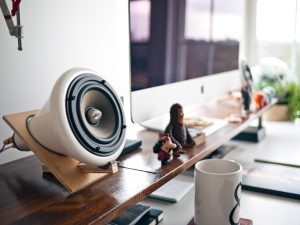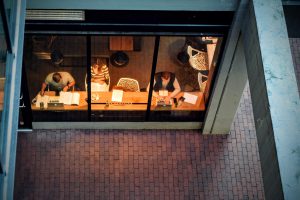Anyone who’s come to our office knows we value the power and functionality of a well-crafted creative space. From the constant flood of natural light to Ish’s art collection to the eclectic array of found furniture from around the world, we’ve tried to make a space that’s both stimulating yet comfortable and cozy. Renowned London designer Reno Macri knows all too well the science, art and productivity aspects of building the right office for creative teams, and we’re thrilled he’s shared with us some of his latest insights on why office environment can make us better, flexible and creative thinkers.

There are many reasons why the design of an office is important, ranging from making a positive impression on clients, to ensuring each of your staff members have sufficient space, to more general office branding strategies. However, one of the most important reasons is the influence design can have on employee behaviour.
Indeed, workplace surroundings can impact upon staff members’ productivity, communication, customer service, etiquette and even their attendance. In this blog post, we look at how ideas surrounding design and office space planning can positively change the behaviour of your employees.
- FlexibilityMany businesses make the mistake of opting for either open plan or closed-space offices, depending on how important collaboration and privacy are. Yet, in reality, one of the best ways to improve employee behaviour is to provide an element of choice, because employees’ needs may change over the course of a working day.
Collaboration is important, which is why open plan offices have emerged as the dominant design. Yet,research from Steelcasefound that the 11 percent of employees with the best access to workplace privacy were the most satisfied with their surroundings. The solution, therefore, is to provide workers with a design that offers them both.
2. Branding
In addition to pure office space planning, the branding of a workplace can influence employee behaviour. Through intelligent use of company logos, slogans, buzzwords and colour schemes, employees can be continuously reminded of who they represent and what their mission is.
“Employee behaviour and health are influenced by company culture as well as space design,” says Cyril Parsons, managing director of Office Principles. Through office branding, a business can communicate culture clearly.
3. Biophilic Design
Finally, in recent times, studies have shown the importance of including natural elements, such as sunlight and plants, into office design. In fact, the Human Spaces Global Report highlights the fact that office workers with access to natural light and greenery have a 13 percent higher level of well-being.
Multiple studies have shown a correlation between well-being and productivity, while Human Spaces found that biophilic design also enhances creativity and reduces absenteeism.
Reno is a founder and director of a leading exhibition and event company Enigma Visual Solutions, specialising in retail designs, interiors, graphic productions, signage systems, office branding, event branding, exhibition stands design and much more. He specialises in experiential marketing and event productions. He enjoys sharing his thoughts on upcoming marketing ideas and design trends. Feel free to follow him on twitter.
